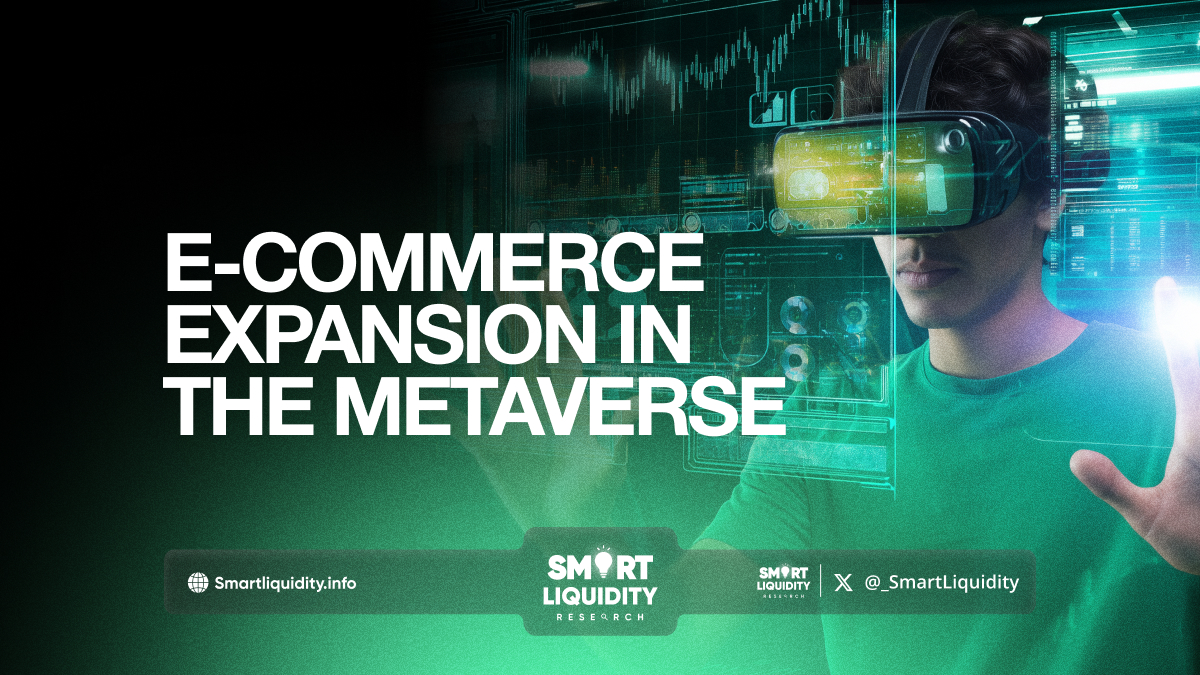E-commerce Expansion in the Metaverse


As digital and physical worlds merge, e-commerce is evolving fast. The Metaverse is now a dynamic commercial hub, not just a sci-fi dream. This article explores how e-commerce is expanding in the Metaverse, its workings, platforms, advantages, hurdles, and the key trends shaping the future of online shopping.
Defining E-Commerce in the Metaverse
E-commerce in the Metaverse refers to buying and selling digital or physical goods through immersive, interactive virtual environments. Unlike traditional e-commerce websites or apps, Metaverse commerce occurs via avatars in 3D spaces, enabled by technologies such as virtual reality (VR), augmented reality (AR), blockchain, and NFTs.
Instead of browsing through static product pages, users can explore virtual malls, attend exclusive product launches, try on digital clothing in AR mirrors, or interact with AI-powered sales assistants. These immersive experiences transform shopping into a social, engaging, and gamified activity. The commerce isn’t limited to digital goods either—many transactions are “phygital,” meaning a digital purchase may be paired with a real-world item.
Leading Metaverse Platforms for E-Commerce
Numerous platforms are building the infrastructure for Metaverse commerce. Some are Web3-native while others are evolving from gaming or social platforms. Each enables a different flavor of virtual commerce, from NFT sales to full-scale brand activations.
Platform | Key Features | Commerce Tools | Target Users |
Decentraland | 3D decentralized world with NFT-based ownership | Wearable sales, virtual land, crypto payments | Creators, brands, gamers |
Roblox | Game-like UGC platform with strong youth engagement | In-game purchases, virtual storefronts | Gen Z, developers, IP owners |
Meta Horizon Worlds | VR social world developed by Meta | Marketplace, event monetization | Creators, advertisers |
The Sandbox | Virtual real estate, voxel art-based economy | NFT shops, land monetization | Web3-native creators |
Spatial | Social 3D spaces for creators and businesses | VR showrooms, NFT integration | Artists, brands, event hosts |
These platforms support digital product sales, ticketing, subscription models, and in some cases, hybrid (physical + digital) transactions. The ability to tokenize assets and track ownership across platforms via blockchain is a major differentiator from conventional e-commerce.
How Brands Are Monetizing the Metaverse
Forward-thinking brands are already tapping into Metaverse commerce in bold and creative ways. What sets them apart is their embrace of interactivity, storytelling, and virtual identity.
Virtual Flagship Stores
Luxury brands like Gucci, Ralph Lauren, and Balenciaga have launched immersive virtual stores where users can explore digital wearables and NFTs. Some experiences even replicate the feel of a high-end boutique, complete with virtual staff and limited-edition drops.
Digital Twins and Phygital Goods
Retailers are experimenting with “digital twins”—NFTs that represent a physical item. For example, Nike’s RTFKT sells digital sneakers in the Metaverse, which can be redeemed for a physical counterpart. This bridges the gap between digital engagement and tangible value.
Event-Based Commerce
Brands host product launches, fashion shows, and concerts in Metaverse spaces. These events can drive exclusive sales and generate buzz. For example, Wendy’s opened a virtual restaurant in Horizon Worlds where users could interact and participate in branded games.
Token-Gated Access
Through blockchain integration, certain product lines or events can be made accessible only to wallet holders of specific NFTs. This model enables scarcity, exclusivity, and community engagement—a powerful combination for brand loyalty.
The key to monetization is crafting unique experiences that blend entertainment, exclusivity, and social interaction—moving beyond the transactional to create emotional connections with customers.
Benefits of Metaverse-Enabled E-Commerce
The expansion of e-commerce into the Metaverse is not just a novelty—it offers a host of strategic advantages for businesses:
a. Immersive Customer Experience
Unlike scrolling through product images, Metaverse shoppers can explore virtual aisles, try on outfits using their avatars, or visualize furniture in a digital home. This interactivity boosts confidence in purchasing decisions.
b. Hyper-Personalization
With AI, avatars, and user behavior tracking, businesses can deliver deeply personalized experiences. From custom product recommendations to avatar-based try-ons, personalization in the Metaverse feels intuitive and visual.
c. Community-Driven Commerce
Users are not just shoppers—they’re participants. Communities can co-create products, vote on designs, and share their own digital items, building a sense of ownership and loyalty.
d. Global Reach, 24/7
Metaverse platforms transcend geographic barriers, enabling businesses to reach a global audience around the clock without the logistical burdens of physical retail.
e. Digital Ownership and Resale
Thanks to NFTs and blockchain, users truly own digital assets. This opens secondary markets for reselling virtual goods, generating new economic activity and passive income for users and creators.
Challenges and Concerns
Despite its vast potential, Metaverse e-commerce is still in a formative stage and faces considerable challenges.
a. Accessibility and Tech Requirements
VR headsets, high-performance devices, and fast internet remain barriers for many users. Brands must design experiences that are lightweight and accessible across devices.
b. Regulatory Uncertainty
The Metaverse raises new legal questions: How are virtual assets taxed? What consumer protections exist for avatar-based commerce? Regulatory frameworks are still catching up, creating uncertainty for businesses.
c. User Privacy and Data
With biometric data, behavioral tracking, and wallet addresses in use, data privacy becomes a pressing concern. Transparency and ethical handling of user data will be crucial.
d. Sustainability
Running persistent virtual worlds and NFTs on certain blockchains can be energy-intensive. More platforms are moving toward eco-friendly solutions, but sustainability remains an open challenge.
e. Security and Scams
From phishing to wallet hacks, bad actors are drawn to emerging platforms. Brands must invest in education, authentication, and safe user experiences.
What the Future Holds: Key Trends to Watch
E-commerce in the Metaverse will not just mirror existing online shopping—it will redefine it. Here are some exciting trends to anticipate:
- AI-Powered Virtual Assistants: Smart bots that guide users, personalize recommendations, and provide real-time customer service in 3D spaces.
- Interoperable Avatars and Assets: Users will soon carry their avatars, digital wearables, and identity across different Metaverse platforms, enabling cross-brand experiences.
- Decentralized Brand Communities: DAOs will allow communities to shape product development and share in brand success, radically changing the producer-consumer relationship.
- Tokenized Loyalty Programs: Blockchain-based points and rewards will be interoperable across platforms and usable for more than just discounts.
- Mixed Reality Showrooms: Businesses will blend physical stores with AR/VR extensions, allowing shoppers to preview or even co-design products in real time.
These trends point toward a future where e-commerce is not just immersive, but participatory, democratic, and intelligent.
Conclusion
E-commerce in the Metaverse is not a passing trend—it’s a paradigm shift. As virtual worlds evolve into economic ecosystems, forward-thinking businesses have a chance to pioneer new models of consumer engagement. While challenges in infrastructure, regulation, and accessibility remain, the potential for personalization, global reach, and immersive storytelling is too significant to ignore.
In this new frontier, commerce is not just about what you buy—but how you experience it. And in the Metaverse, the experience is everything.




